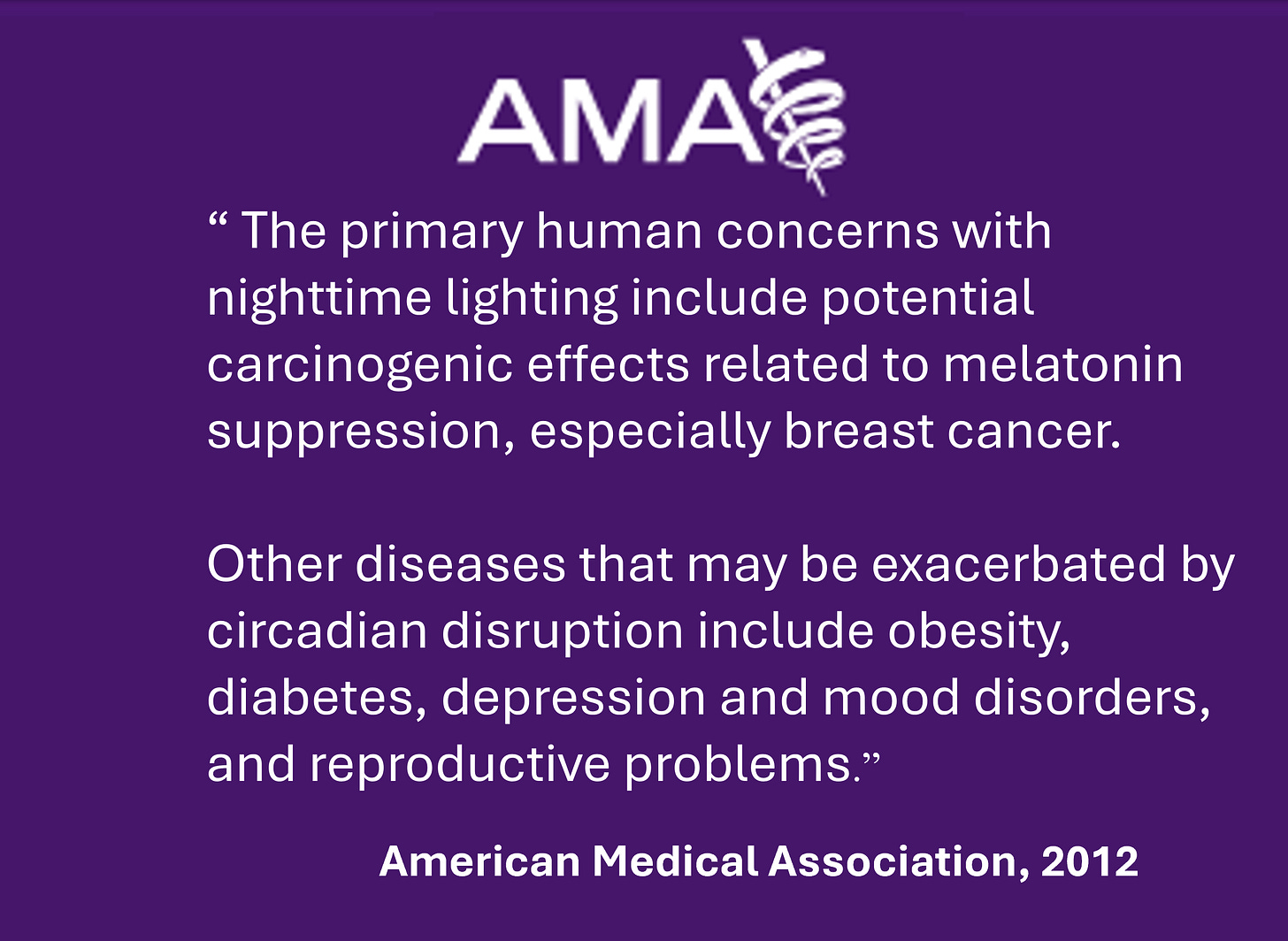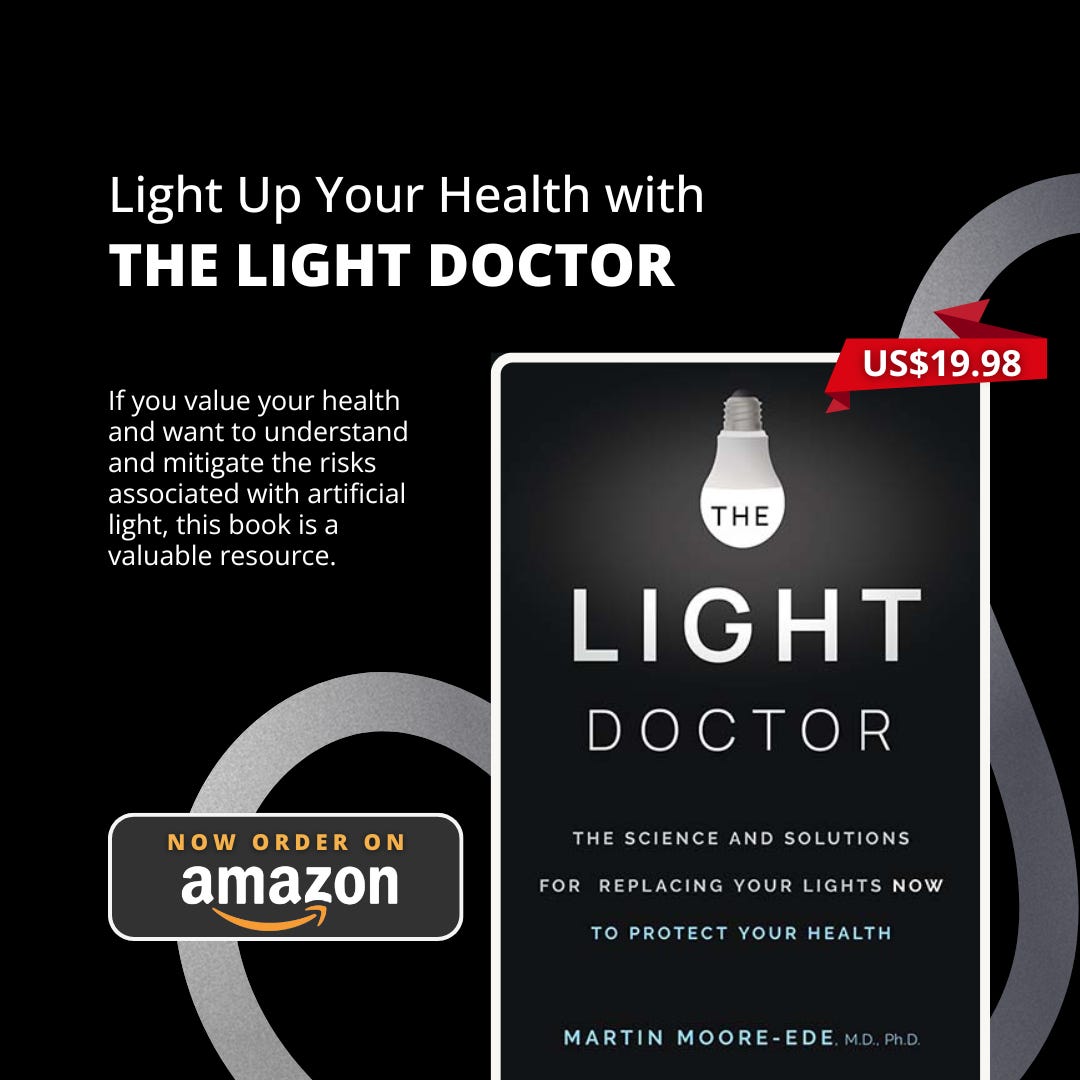Ten Years Ago, Light at Night was Recognized as a Carcinogen, and then we Introduced Blue-Rich LED Lights
Week 3 of Breast Cancer Awareness Month (October 15 - 22nd) explains how much we already knew and ignored 10 years ago with the unwise push into blue-chip LEDs
It has been more than 10 years since light at night was broadly recognized as a carcinogen that significantly increased the risk of breast cancer. Expert scientific review panels at the World Health Organization, and at the American Medical Association issued red flag warnings.
In the same time frame, blue-rich LED lights started to flood the market and were acknowledged with a Nobel Prize. Yet we knew 10 years ago that blue light near the 480 nm peak sensitivity of the melanopsin receptors in the eye was 25 times more powerful at disrupting circadian clocks than broad-spectrum white light.
The full explanation of this evidence and the relevant scientific citations can be found in my book, THE LIGHT DOCTOR.
October 15
17 years ago: World Health Organization (WHO) identified light exposure on night shifts as a carcinogen
Based on the accumulated scientific evidence, in 2007 the World Health Organization (WHO) International Agency for Research on Cancer (IARC) identified exposure to light on night work shifts as a Type 2A carcinogen.
October 16
16 years ago: Environmental light at night linked to breast cancer but not lung cancer in the female population of Israel
Nighttime satellite images were used to estimate light at night intensity levels in 147 communities in Israel in 2008. Areas with bright lighting at night had significantly higher rates of breast cancer as compared to those that were dimly lit. However, other cancers, such as lung cancer, showed no such association with light at night.
October 17
15 years ago: Danish government started paying compensation to night shift workers who got breast cancer.
Based on the findings of the World Health Organization, the Danish government started to pay compensation to women who developed breast cancer after working on night shifts.
October 18
12 years ago: American Medical Association (AMA) links blue-rich light at night to breast cancer, and to obesity, diabetes, and depression
In 2012, the American Medical Association issued its first warning about exposure to light at night causing melatonin suppression and the increased risk of breast cancer, as well as obesity, diabetes, depression and mood disorders, and reproductive problems.
October 19
10 years ago: Light at night blocks breast cancer drugs like tamoxifen
In 2014, exposure to light at night was shown to block the effectiveness of important breast cancer treatment drugs, such as Tamoxifen.
October 20
10 years ago: Blue light is 25 times more effective at disrupting circadian clocks
In 2014 pure (monochromatic) sky-blue light was shown to be about 25 times more effective than other color wavelengths in the white light spectrum. A mere 11 lux of sky-blue light at 480 nm, produced almost as large an effect in shifting the human circadian clock as 10,000 lux of polychromatic white light.
October 21
10 years ago: Nobel Prize awarded for Blue Chip LEDs
In 2014, the Nobel Prize for Physics was awarded to three Japanese scientists, Isamu Akasaki, Hiroshi Amano, and Shuji Nakamura, for inventing the blue-pump LED chip, which is highly efficient, and uses a phosphor coating to produce bright white light. This is not a problem during the day, but the blue-rich light can be devastatingly harmful to human health at night.
October 22
10 years ago: Blue-chip LEDs began to flood the lighting market
Backed by government energy policy and economic incentives, blue-rich LED lights flooded the lighting market. They increased from 1% market share in 2014 to over 90% market share today.
Sources
For further details and background on each of these scientific developments please consult my new book THE LIGHT DOCTOR: Using Light to Boost Health, Improve Sleep and Live Longer. This also provides the citations to the scientific peer-reviewed literature.
THE LIGHT DOCTOR is a reader-supported publication. To receive new posts and support our campaign for healthy lighting, please consider becoming a free or paid subscriber.













